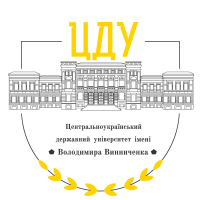SYNERGY OF VERBAL AND NON-VERBAL MEANS OF MANIFESTATION OF AMERICAN SOCIO-CULTURAL VALUES IN MASS MEDIA TEXTS
DOI:
https://doi.org/10.32782/2522-4077-2024-208-36Keywords:
mass media, multimodal text, socio-cultural values, verbal means, non-verbal means of manifestationAbstract
The research is focused on the analysis of verbal and non-verbal means of manifestation of American sociocultural values in mass media texts. The peculiarities of the functioning of media services are analyzed, the role of mass media as the main source of information in modern social life, which forms and transforms a person's perception of the realities of the surrounding world, the processes and events that take place in it, is defined. Media text is the main tool for forming a linguistic image of reality and always reflects the specifics of national ideas in mass media. Socio-cultural values are considered as spiritual and material guidelines that have personal significance and are motivations for activity, determining the peculiarities and character of an individual's relationship with the surrounding reality and to some extent determining his or her behavior. The relevance of the study of explicators of socio-cultural values in mass media texts is beyond doubt. The purpose of the study is to establish the regularities of the interaction of verbal and non-verbal means of representation of socio-cultural values of Americans in mass media texts. The analysis of media discourse allows investigating the values of the American linguistic culture through the prism of "live" mass media communication. Multimodal texts bring modern communication to a qualitatively new level that meets the requirements of the new age. Creolized (multimodal) texts are distinguished by their inhomogeneity – a combination of verbal and non-verbal parts, semantically, structurally and pragmatically connected. Non-verbal means try to attract the attention of the addressee; therefore full explanation of textual information becomes impossible without their decoding and interpretation. The level of integration of all illustrative and visual means is sufficiently high in the single textual space of printed and electronic media services. Accordingly, the image no longer simply illustrates the verbal text, but is integrated into its semantics. The synergy of verbal means with non-verbal signs contributes to adequate understanding during communication.
References
Про медіа: Закон України від 13.12.2022 р. № 2849-ІХ. Дата оновлення: 08.12.2023. URL: https://zakon.rada.gov.ua/laws/show/2849-20#Text (дата звернення: 24.01.2024).
Макарук Л. Л. Мультимодальність сучасного англомовного масмедійного комунікативного простору: дис...д-ра філол. наук: 10.02.04. Луцьк, 2019. 635 с.
Нора П. Теперішнє, нація, пам’ять / Пер. із. фр. А. Рєпи. К.: КЛІО, 2014. 272 с.
Світліковська О. А. Реалізація соціокультурних цінностей американців та британців у вербальних та невербальних засобах як складниках мас-медійних текстів. Вчені записки ТНУ імені В. І. Вернадського. Серія: Філологія. Соціальні комунікації. 2020. Т. 31 (70). № 4. Ч. 2. С. 177–183.
Світліковська О. А. Вербальні і невербальні засоби актуалізації соціокультурних цінностей британців та американців (на матеріалі англомовних масмедійних текстів) : дис. ... канд. філол. наук : 10.02.04. Запоріжжя, 2021. 303 с.
U.S. Department of State. URL: https://cutt.ly/bwLNDPUN (дата звернення: 24.01.2024).
Polimedio Ch. Democracy: A Contested American Value. New America Weekly. URL: https://cutt.ly/owLNSMKw (дата звернення: 24.01.2024).
Scholar explains why he thinks the GOP has turned away from Democracy. CNN. URL: https://cutt.ly/XwUUKHGg (дата звернення: 24.01.2024).
The Story Behind TIME’s ‘Year One’ Joe Biden Cover. TIME. URL: https://cutt.ly/PwL0mKb4 (дата звернення: 24.01.2024).








